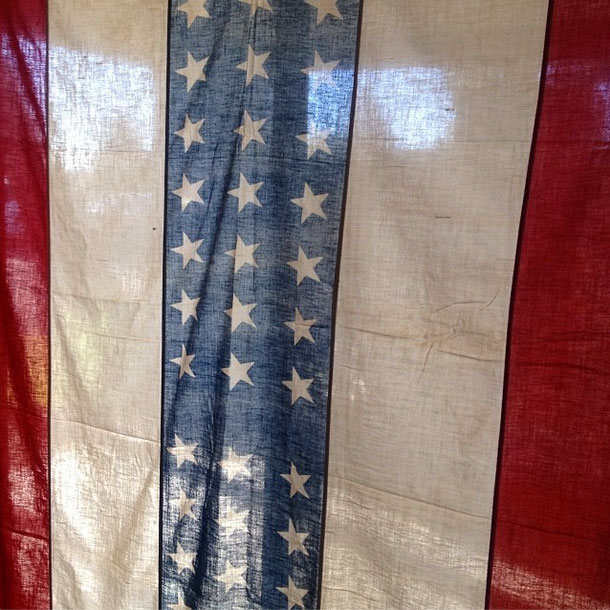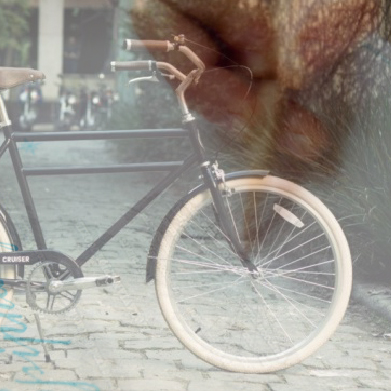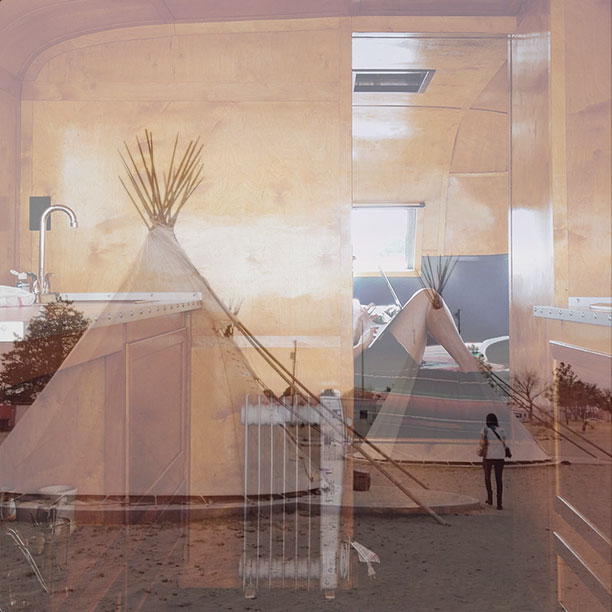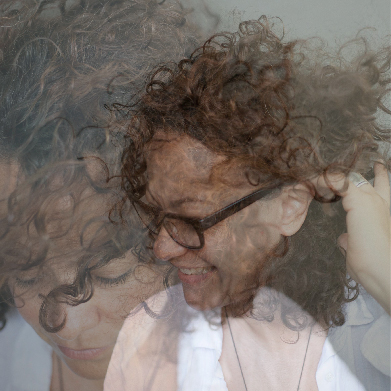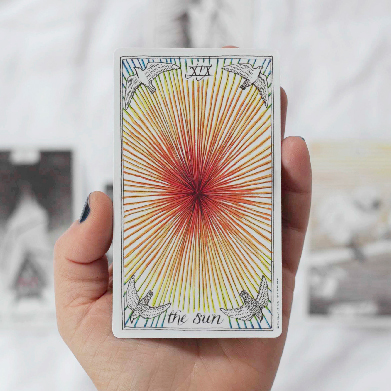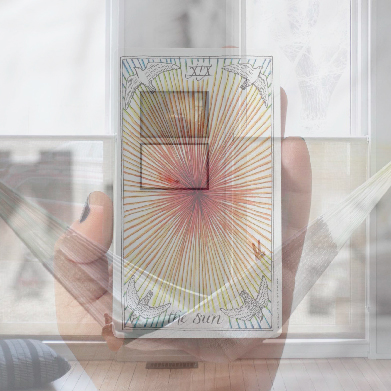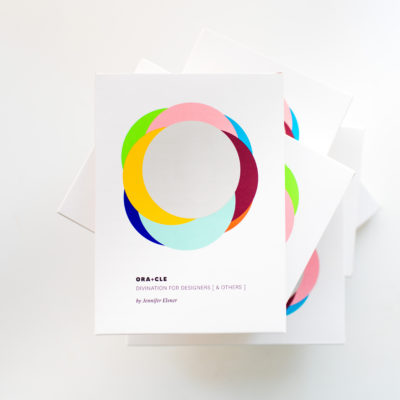
About ORA+CLE
ORA+CLE is what you already know, but different. A divination tool created with the needs of a Designer in mind. ORA+CLE is a daily guide to help create a bridge between your emotional body, and what action is needed. An ORA+CLE practice energizes the present and empowers the future. ORA+CLE is intrinsic, esoteric, dynamic, cosmic, prosaic, therapeutic, rhapsodic, terrific. It's a vehicle for finding meaning & magic in the quotidian.
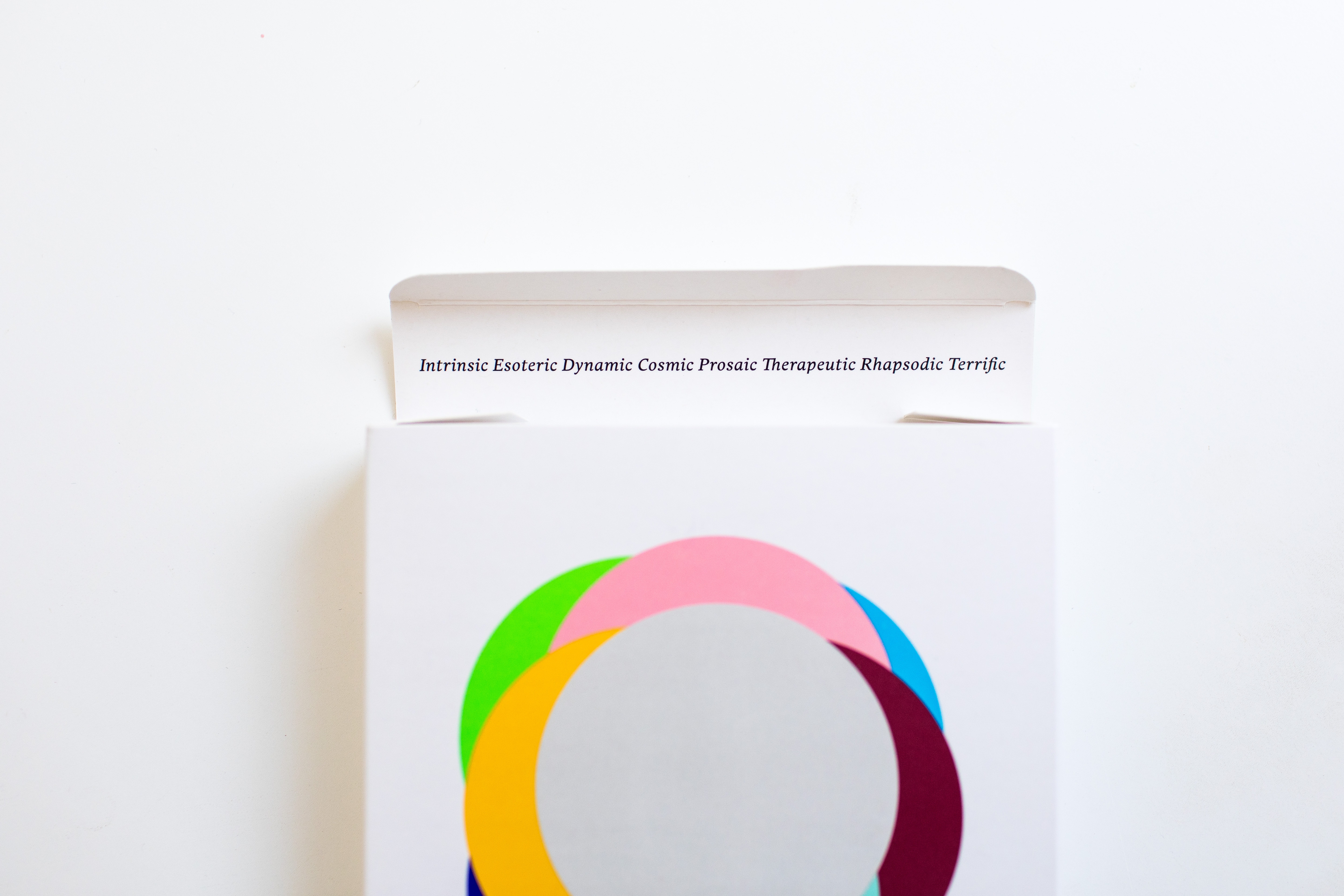
ORA+CLE
Divination for Designers
[ & Others ]
ORA+CLE is a performance piece, a conversation, as well as an object. A limited edition of 50 decks have been made for the public → HERE
What’s an ORA+CLE Deck?
An oracle deck is similar to Tarot; an object of meditation that encourages its participant to explore and uncover truths about themselves. It holds the promise of a dynamic, positive, spiritual transformation via understanding our essential selves.
Where ORA+CLE differs from an oracle deck or Tarot is that it’s a looser, more utilitarian exploration. Its scope encompasses the emotional experiences we have as designers. ORA+CLE was developed pragmatically, intuitively, and yes, sacredly. ORA+CLE is meant to be used on its own — as a way of deepening inquiry — or as a compliment to a Tarot practice. Oh! And it encourages you to use your critical thinking skills, too.
While ORA+CLE is a divination tool created with the needs of designers in mind, it works for anyone who interfaces professionally or personally with humans. So, pretty much everyone.
Why an Oracle Deck?
The designer/client relationship is at the core of my professional and artist practice. How to purify and make these unions more perfect is rich with opportunity. The inquiry lights me up.
Cultivating the intimacy necessary for a rewarding designer/client rapport is often avoided under the guise of being ‘professional.’ This fiction results in distrust, disinterest, dissatisfaction. On both sides. My stance is more emotional investment, not less, is the only way to conduct business. ORA+CLE is a tool to harness a paradigm shift.
Why the name ORA+CLE?
The name ORA+CLE began as a typo, and I liked it. The typesetting is an aesthetic composition that also clearly identifies the nature of the object. Done.
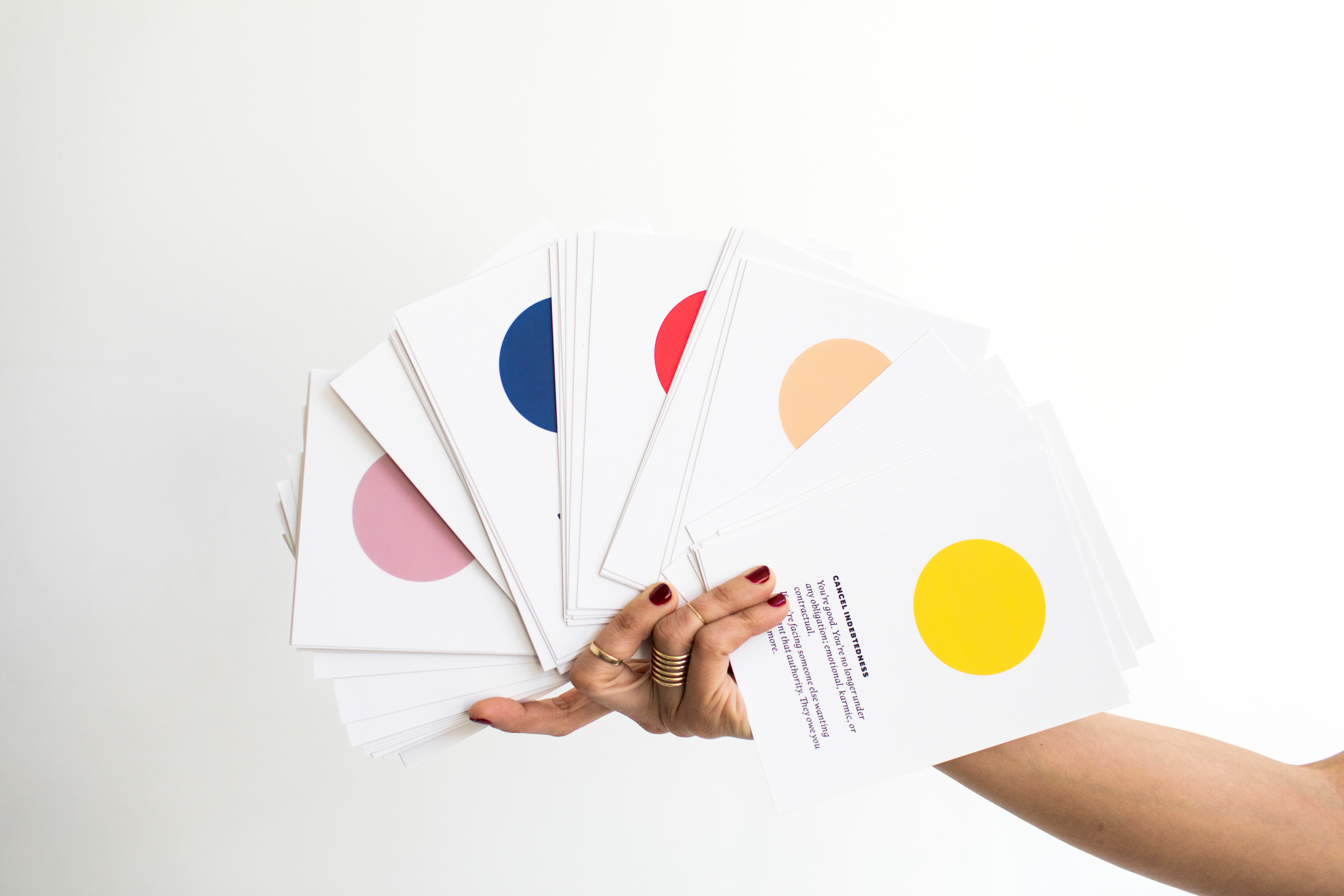
About The Cantos
My artist practice is a critique of my professional practice. It’s a decades-long performance piece. ORA+CLE is the most recent in a series of projects titled: The Cantos. A reckoning of past work, behaviors and clients.
The Cantos: 1 was a 2-month long, daily written response, to a 6,000 mile journey, on a 40′ scroll. The Cantos: 2 was the burning of this scroll and the ashes used to bake a cake I ate. The Cantos: 3 was a month-long, live-streamed reading of 2000 pages of email, representing nine months of digital communication — from the initial courting through the final threat of a lawsuit. ORA+CLE is The Cantos: 4. And The Cantos: 5 will be a future performance where I’ll ritualistically strangle a client’s emails with zip cords. This collection will be cast in bronze, acting as a monument to the relationship.
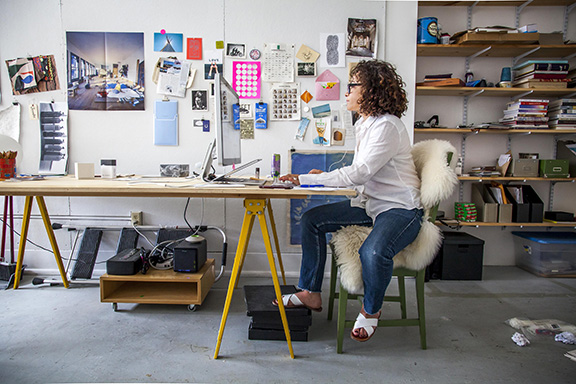
Still from The Cantos: 3, 2016
I recommend reading everything that follows before you begin your first ORA+CLE read—like you would (should) a recipe. Knowing all the “ingredients” upfront will make you a more nimble and knowing user of ORA+CLE. The 4-sections are: Choosing, Prepping, Revealing, Reading.
Choosing your spread
Before you begin any read, you want to determine which spread to use. Being intentional here is a great way to frame the more ephemeral aspects of an oracle and ORA+CLE practice. The spread you choose can respond to a question, situation and/or personal preference. There is no right or wrong way to draw an ORA+CLE card, and there is no specific number of cards needed for a reading. Draw as many cards as inspires you.
That being said, here are a few suggestions:
One Card
This reading works well to gain insight into the bigger questions we have, versus specific situations. I like to frame all one-card questions with: “What do I need to know about [ xyz ].” See if that works for you, too. When I ask specific questions I find guidance is more elusive and therefore harder to wiggle into. Keeping the inquiry general makes space for the full range of wisdom.
An example of a specific question would be: When will my client pay me? Versus a general inquiry: What do I need to know about money?
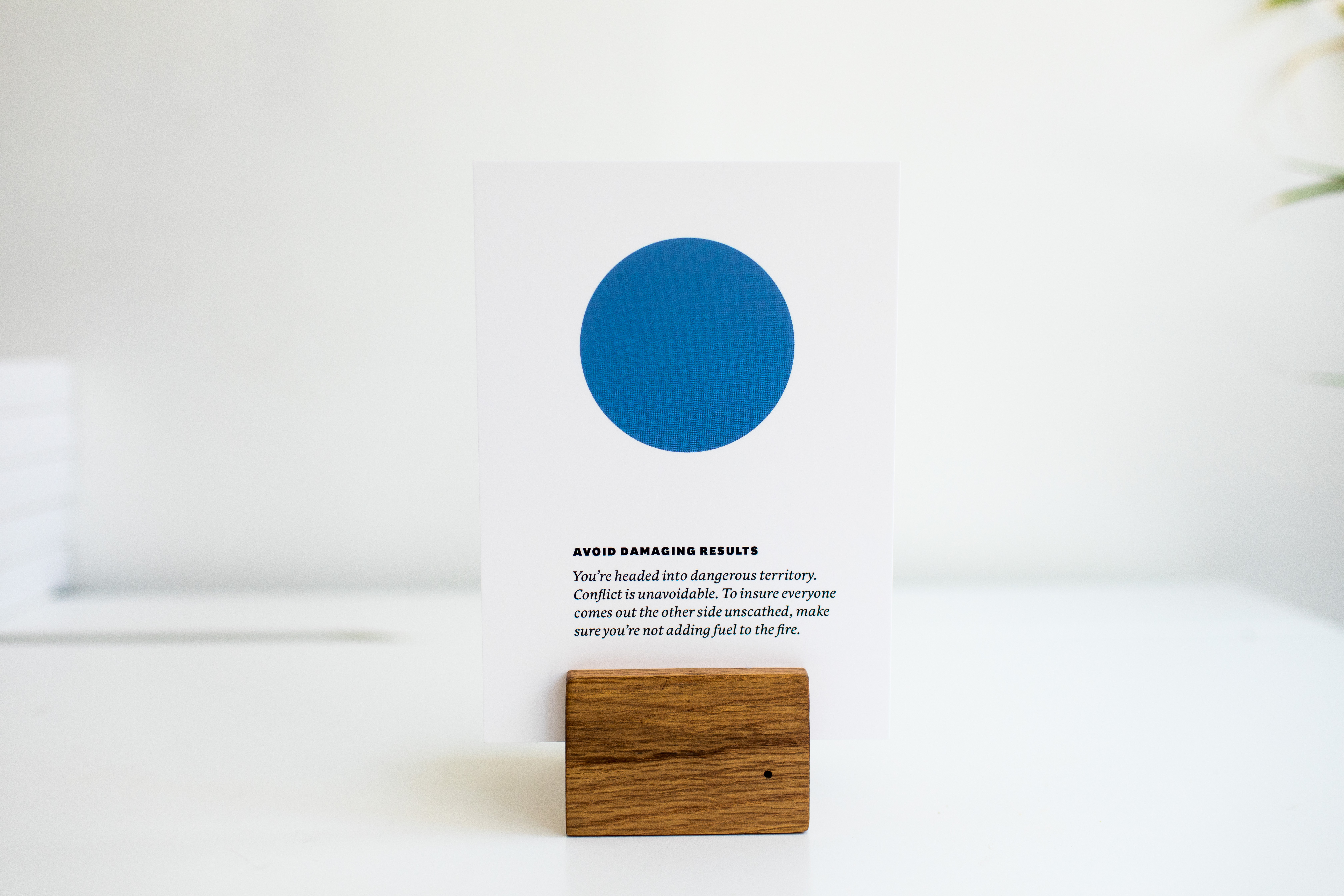
Two Cards
It’s amazing how much information one card holds in relation to a particular question. However, the possibilities created by adding a second card are exponentially greater. The second card can confirm, expand upon, and add nuance to the first card. They can also act relationally, making a two-card spread perfect for the many dualities we experience. Use the prompts below as is, or as a springboard to create your own.
+ Designer / Client
+ Situation / Solution
+ If I take this path / If I take this other path
+ Why did that happen? / What can I learn from it?
+ What do I need to know? / How can I activate it?
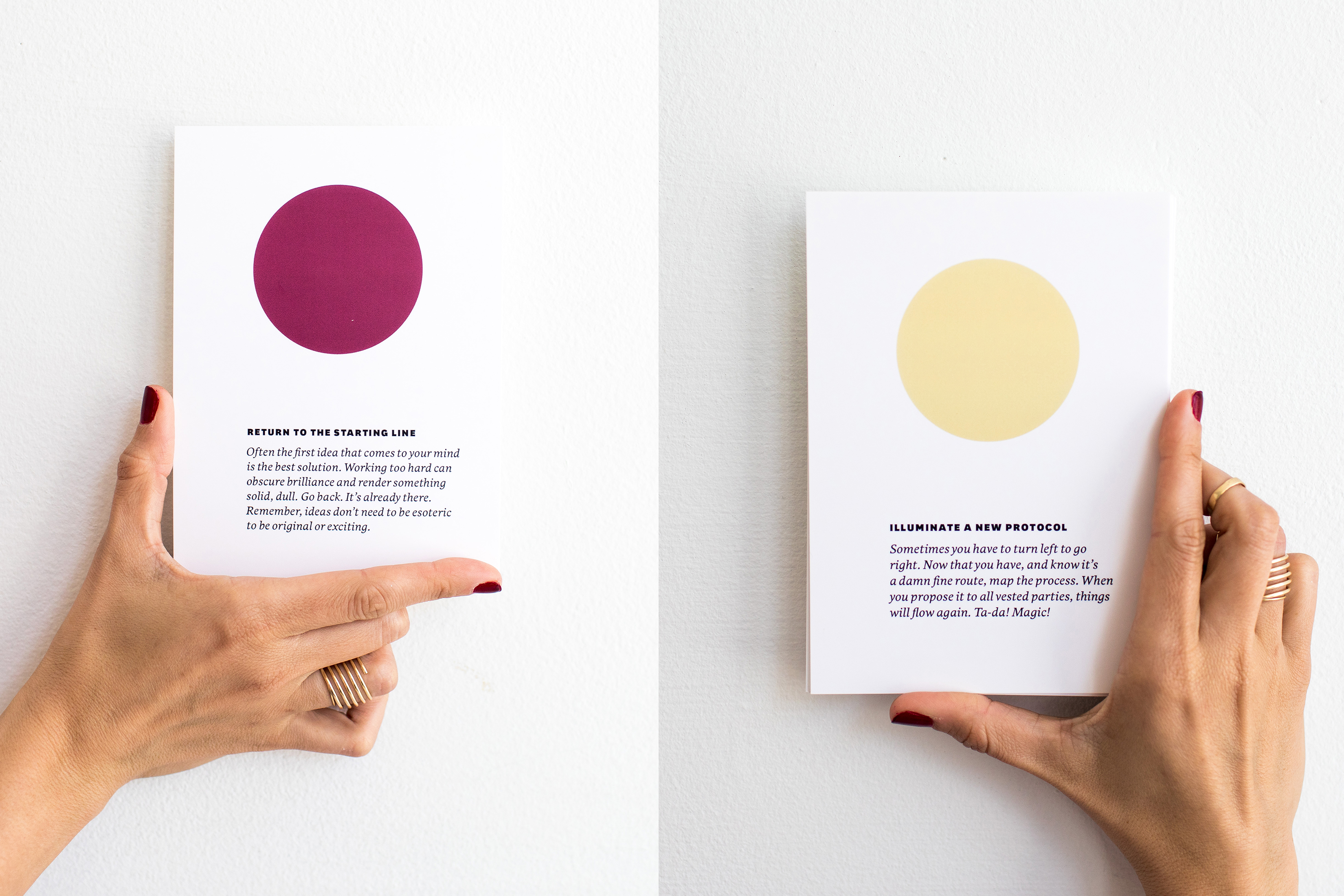
Three Cards
This spread is a way to look at a situation in-depth, and to better understand a challenging question. For all three-card spreads, determine which trio you want to utilize before shuffling the deck. Following are excellent go-tos:
+ past / present / future
The first card in this spread is placed on the left and represents the past influences on the situation. In the middle, you draw a second card that represents the present moment. Finally, the third card is placed to the right, and reveals the future outcome. You choose what future means. Tomorrow? This week? Next year?
+ situation / challenge / guidance
This reading differs from the above as it operates independently of time. In this spread, the first card you draw represents the energy surrounding the question or situation you asked about. The second card speaks to your present challenge, and the third card reveals the guidance you’re needing.
+ me / them / us
For this spread the first card relates to you and your energy — what you want out of the relationship or insight into your true feelings. The second card relates to the other person — how they’re feeling, their energy or what they want out of the relationship. The third card is about the relationship itself — where it stands now, or where it’s heading. This card may also reveal what’s missing, or what could improve the relationship’s harmony.
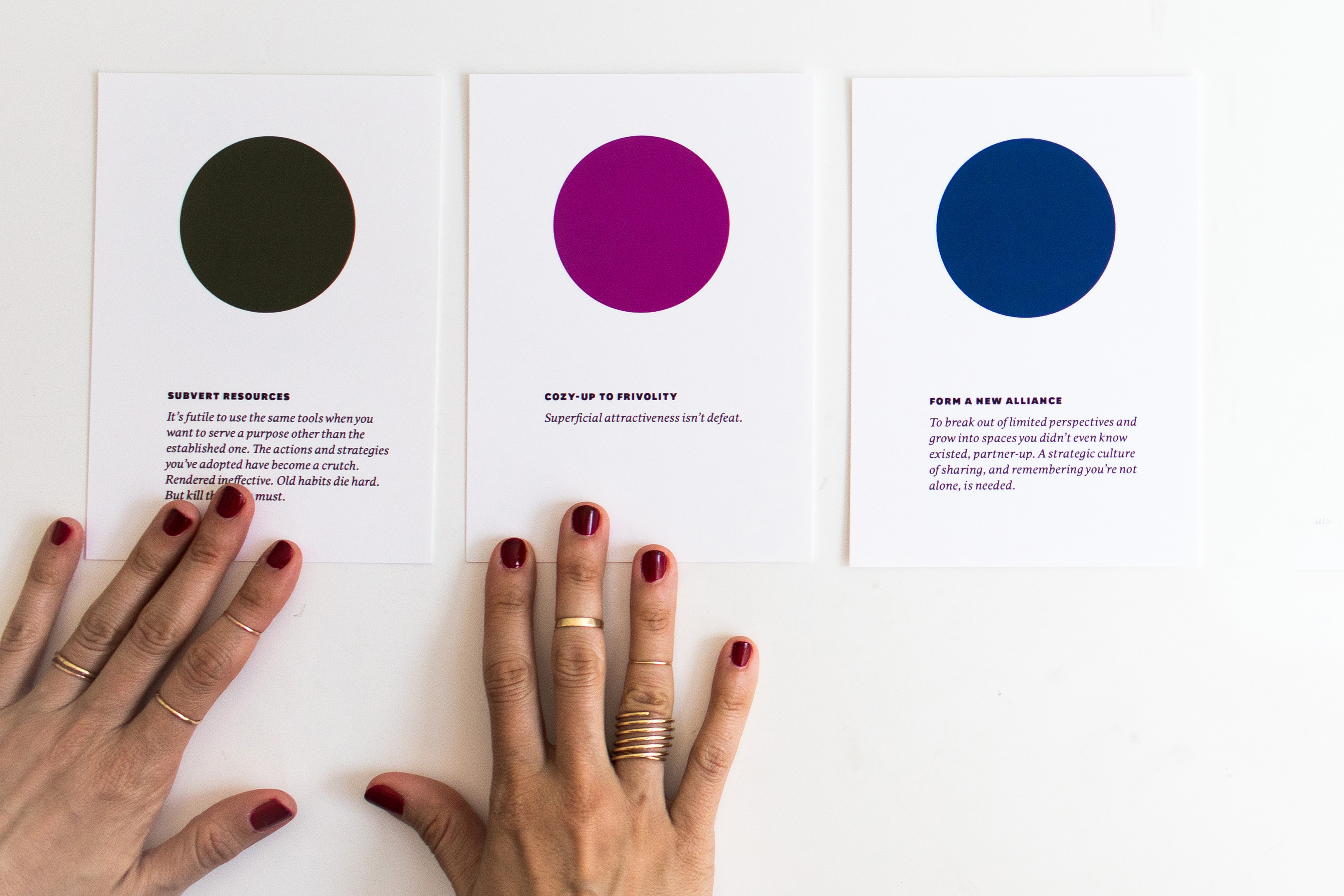
Being clear about which spread you’re wanting to use before you prepare your ORA+CLE deck for a read is a good plan. And if you want to figure that out as you prep your cards, super. I like.
Prepping your cards
To encourage a different posture and approach, ORA+CLE wasn’t designed to be shuffled. Their larger-than-in-your-hand physicality defies it, and the cards being uncoated creates a drag. So how do you randomize an ORA+CLE deck? I have some ideas.
To begin, hold the full deck. Feel its weight. Begin to tune into how you want to move them. The following are examples of the non-shuffle shuffle from my practice.
+ Place each of the 50 cards out in front of you. Reassemble the deck intuitively/mindlessly by focusing on the color and reaching for what calls to you, one at a time. Don’t look at the words, only respond to the colors.
+ Wash the deck face down, mixing the cards gently or intentionally.
+ Cut the deck into multiple piles, and reassemble left to right (for future-based questions) or right to left (for inquiries into the past).
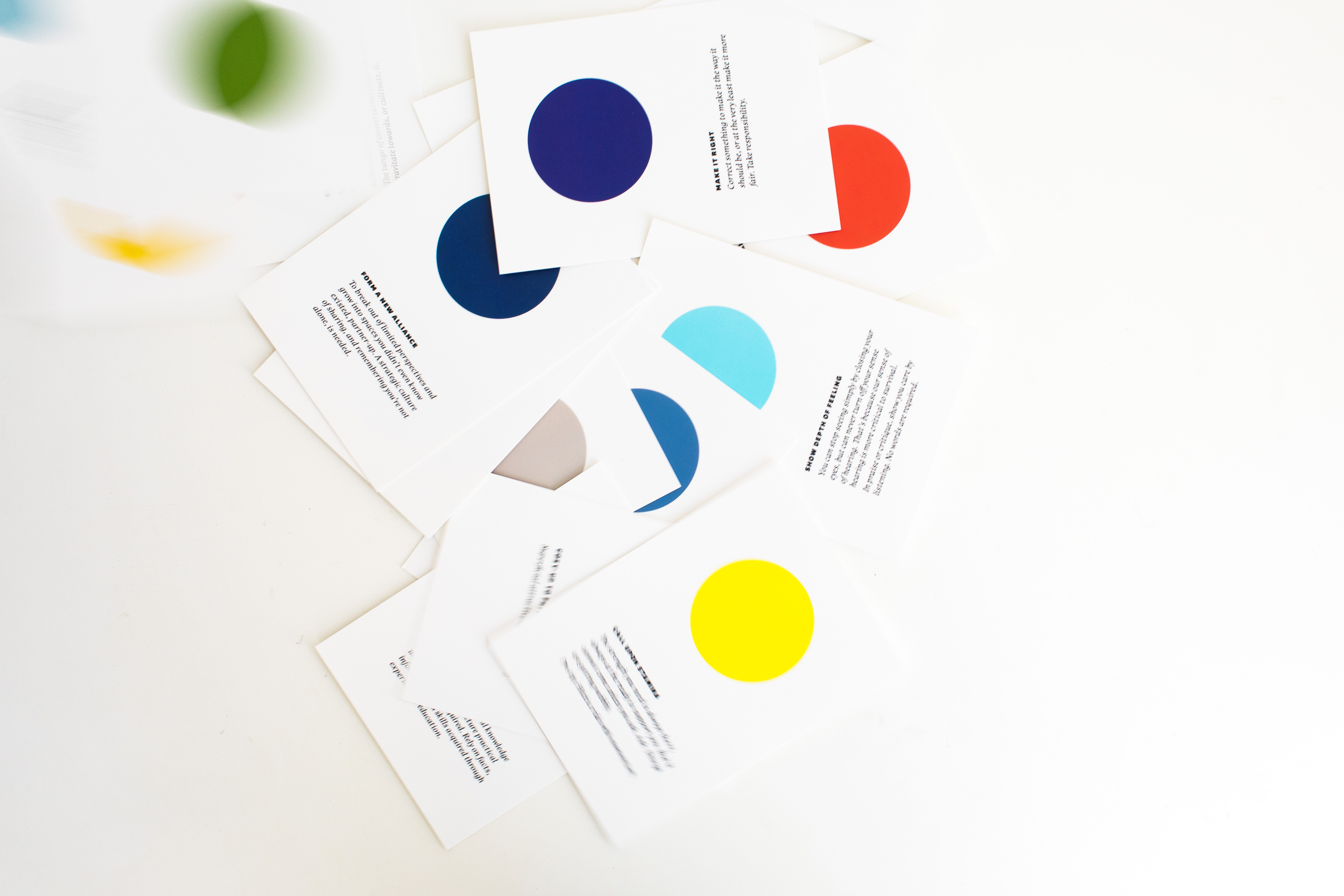
No matter your technique, the focus is on mingling the cards while putting the intention of your question — and your energy — into the deck. When complete, close the ritual by squaring the deck and set them face down.
Revealing your cards
Now that you’ve chosen a spread, connected with intention, and randomized the deck, you can reveal your cards.
Cut the deck for added randomization or as punctuation to this ritual. Then, reveal the top cards in order, in your chosen configuration. You can place them down in a horizontal line. Or maybe try north/south, east/west? In a circle? Wabi-Sabi-like? It’s all good.
Alternately, instead of starting from a stacked deck, you can spread all the cards out in front of you, face down, and choose by allowing the cards to guide your hand.
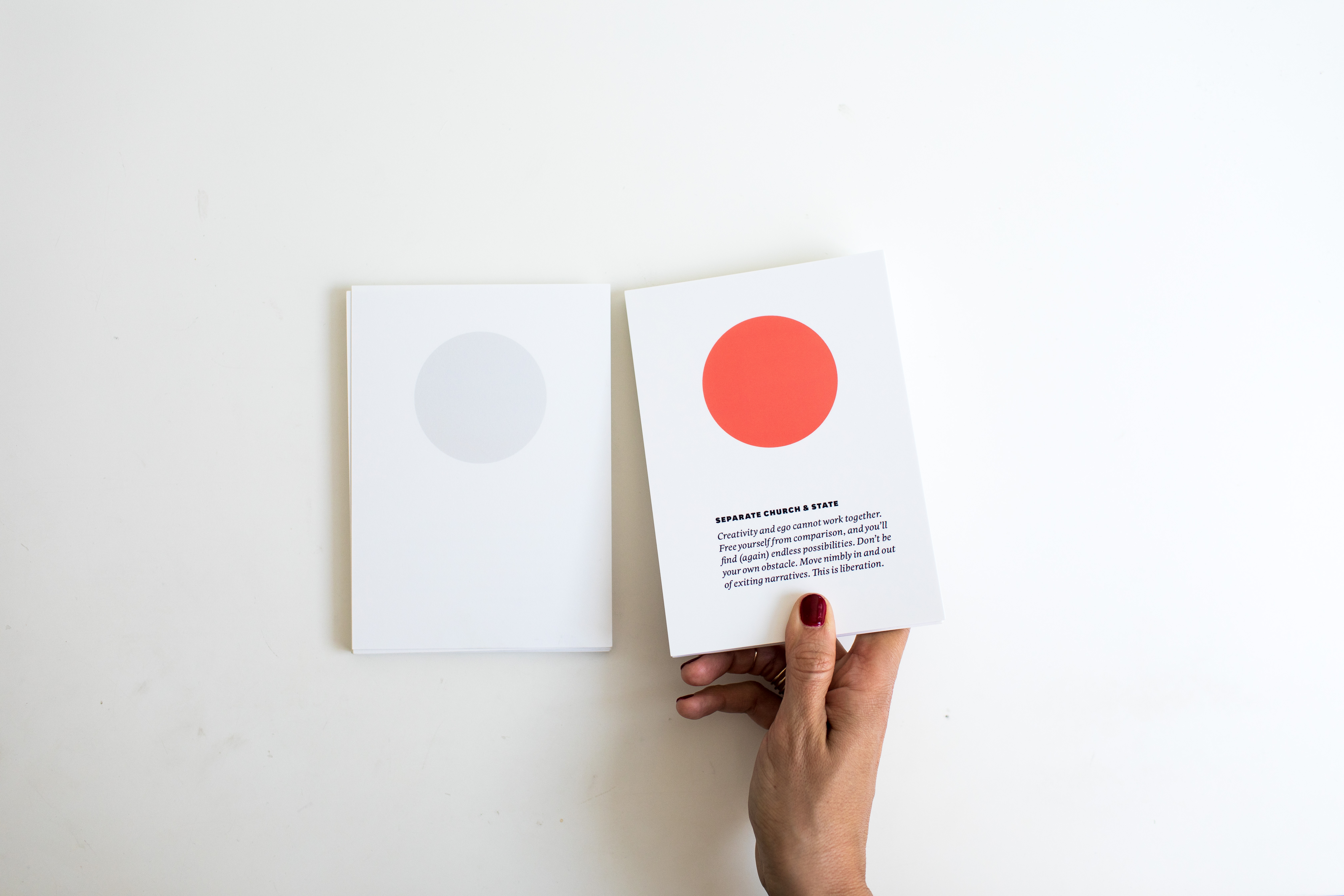
Reading your ORA+CLE
There are three components to each card: a colored circle, an insightful statement, and a deeper dive into finding meaning. Utilize all three elements in your reading.
Start by noticing how each element on the card relates specifically to your inquiry, individually. You can use your eyes, ears, heart, and rational mind to read your cards. You can’t ORA+CLE wrong.
Your first intuitive hits are important, but equally, lived experience and critical thinking. The color on the cards hold as much information as the words, and were chosen to pair with each unique insight. Apply the colors to the words. Analyze, conceptualize, synthesize and evaluate with an open-mind.
How does the colored circle make you feel? How does it respond or contrast with the words? What do you remember? And is that true? If you are working with a spread, take this further and ask yourself, how do the colors and messages communicate with each other? And if at all.
At this point, you can pull another card, return the card to the deck or put it in a place of reverence — let it work its magic as an object. See how your card acts as a reminder, or if its influence on you evolves over time.
Bottom line, you know what to do. And if you think you don’t, The Google does. But you know. #trust

Find your ORA+CLE → HERE
ORA+CLE is for you to befriend, and to use. It’s a conversation, and also a performance piece. By having an ORA+CLE deck you are a part of its realization. How you interface with ORA+CLE matters to me. Spend some time with your deck, and feel free to reach out to share your experience — or use #divinationfordesigners on IG and tag me @adesignconcern so I can have a peek.
I love so much that you’re an integral part of my life, and ORA+CLE.
Standing on the shoulders of giants
Developing ORA+CLE over the past year, I’ve kept a record of intuitive downloads, drawn from personal experiences, and kept a digital file of wisdom found online. All have conspired to make ORA+CLE what she is today. And … time is funny. Due to how long I’ve immersed myself in the study of divination, Tarot and oracle decks, absorbing others’ original ideas into ORA+CLE is a distinct possibility. I’ve pro-actively reviewed ORA+CLE to avoid this scenario, but if you’ve been assimilated, by all means, let me know. I want to remedy that, pronto. I care deeply about this and any infringement on your intellectual property is unintentional. Accept my apologies in advance and I’ll make it right.
Influences aren’t limited to, but absolutely include: Rachel Pollack, Brian Eno, Miranda July, Sarah Faith Gottesdiener, Mary Grisey, and Mary Evans.
The brilliant and wise Rebekah Erev, Suzanne Lentz and Grace Hall all served as ORA+CLE beta testers. Their insights and feedback helped to shape the deck, and my confidence in it.
And deep gratitude is owed to Andrea Zittel. ORA+CLE would be nothing if not for Zittle’s brilliant (and now defunct) Wagon Station Encampment Residency. My time on her property in Joshua Tree, California was integral to the inception of ORA+CLE, and provided the momentum necessary to realize this project.
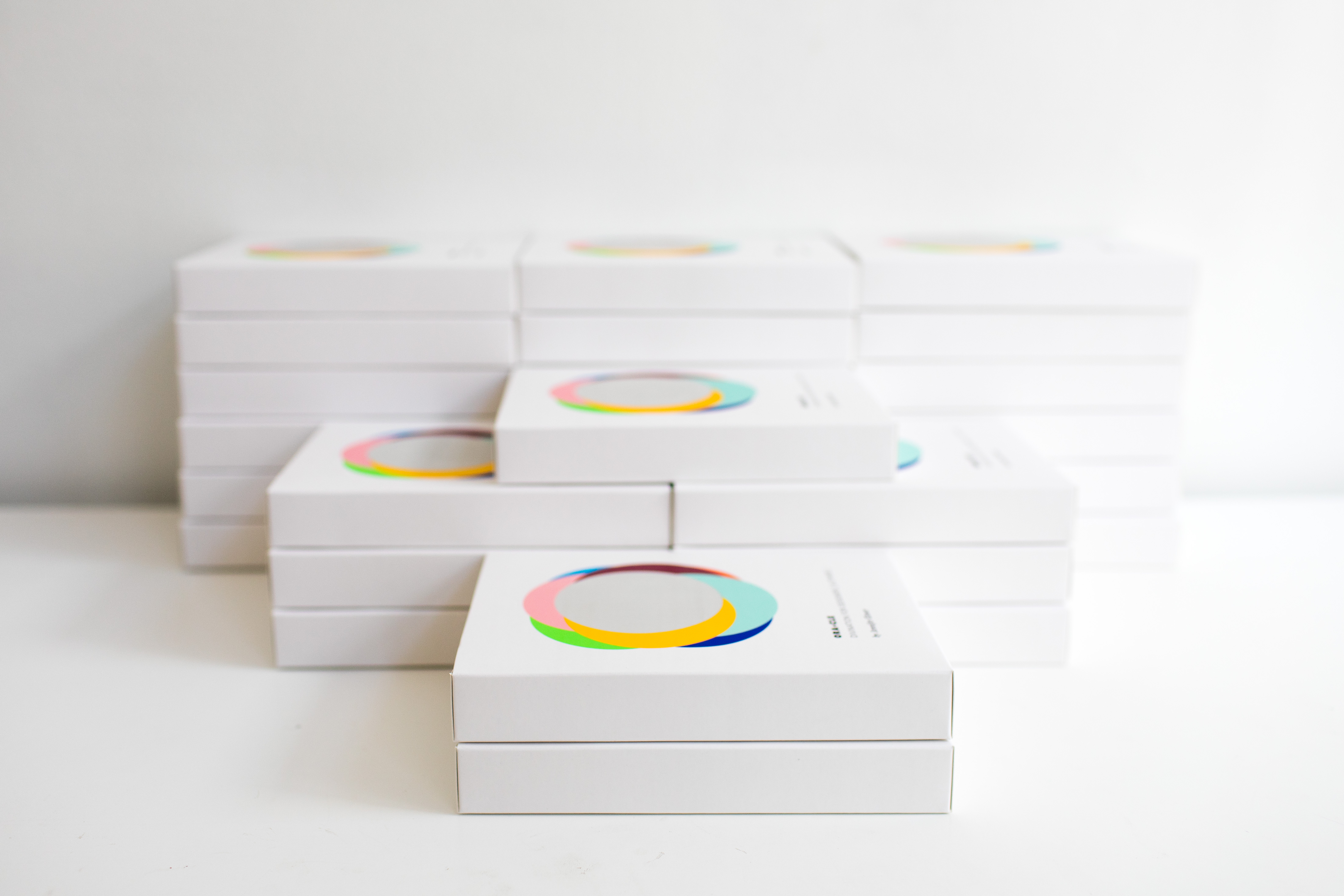
Photography: Kate Thompson | @bettyclicker | Palindrome Creative Co.
